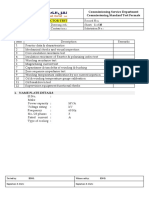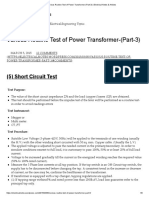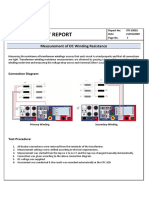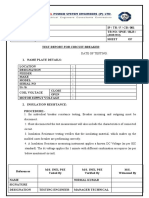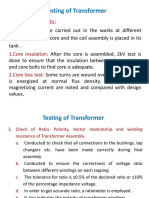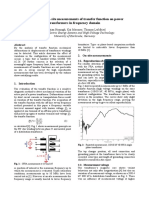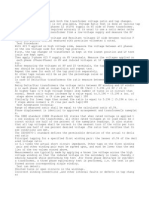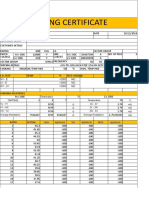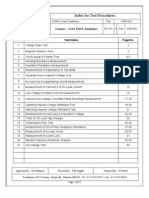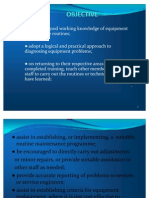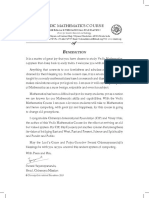0% found this document useful (0 votes)
1K views17 pagesTransformer Testing Pro
1. The document describes various tests performed on transformers during commissioning, including insulation resistance testing, winding resistance measurement, and vector group determination.
2. Key tests include measuring insulation resistance to check for failures, taking winding resistance readings at different taps to check for abnormalities, and applying voltage to terminals to determine the transformer's vector group and polarity according to set conditions.
3. Proper testing ensures the transformer insulation is sound, connections are tight, and the unit will operate as intended upon installation.
Uploaded by
Anonymous 2l8XJIVCopyright
© © All Rights Reserved
We take content rights seriously. If you suspect this is your content, claim it here.
Available Formats
Download as PDF, TXT or read online on Scribd
0% found this document useful (0 votes)
1K views17 pagesTransformer Testing Pro
1. The document describes various tests performed on transformers during commissioning, including insulation resistance testing, winding resistance measurement, and vector group determination.
2. Key tests include measuring insulation resistance to check for failures, taking winding resistance readings at different taps to check for abnormalities, and applying voltage to terminals to determine the transformer's vector group and polarity according to set conditions.
3. Proper testing ensures the transformer insulation is sound, connections are tight, and the unit will operate as intended upon installation.
Uploaded by
Anonymous 2l8XJIVCopyright
© © All Rights Reserved
We take content rights seriously. If you suspect this is your content, claim it here.
Available Formats
Download as PDF, TXT or read online on Scribd
/ 17



